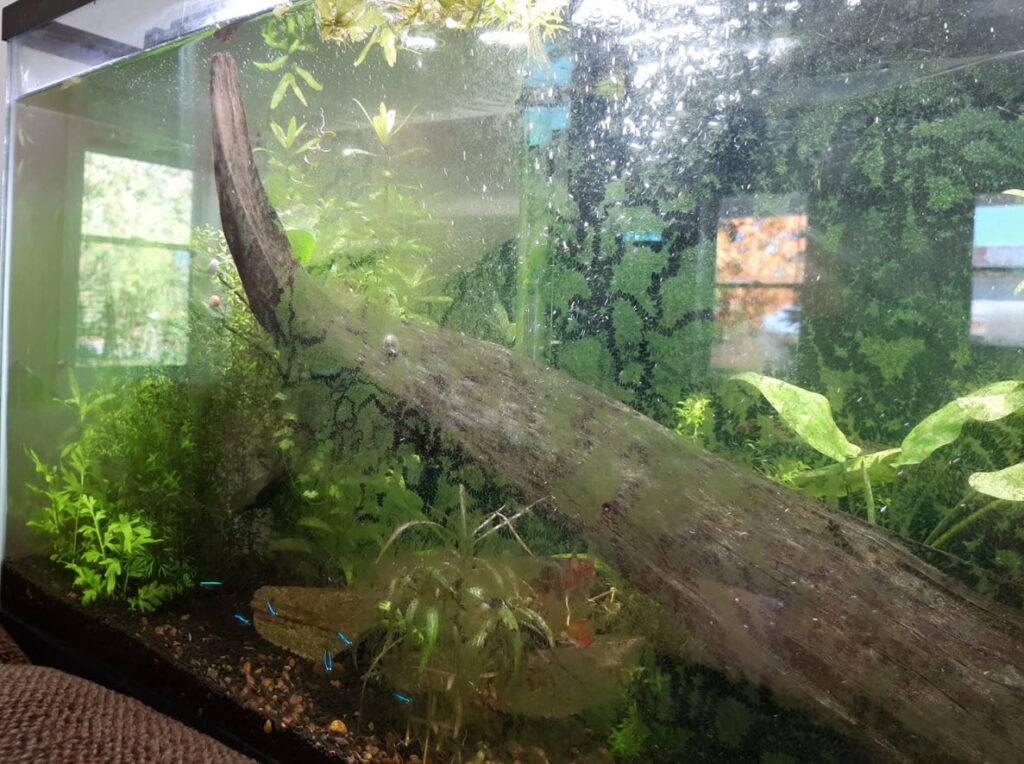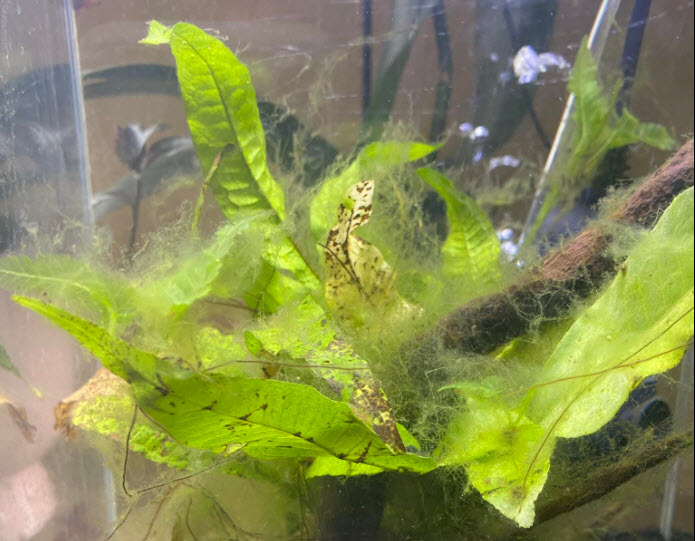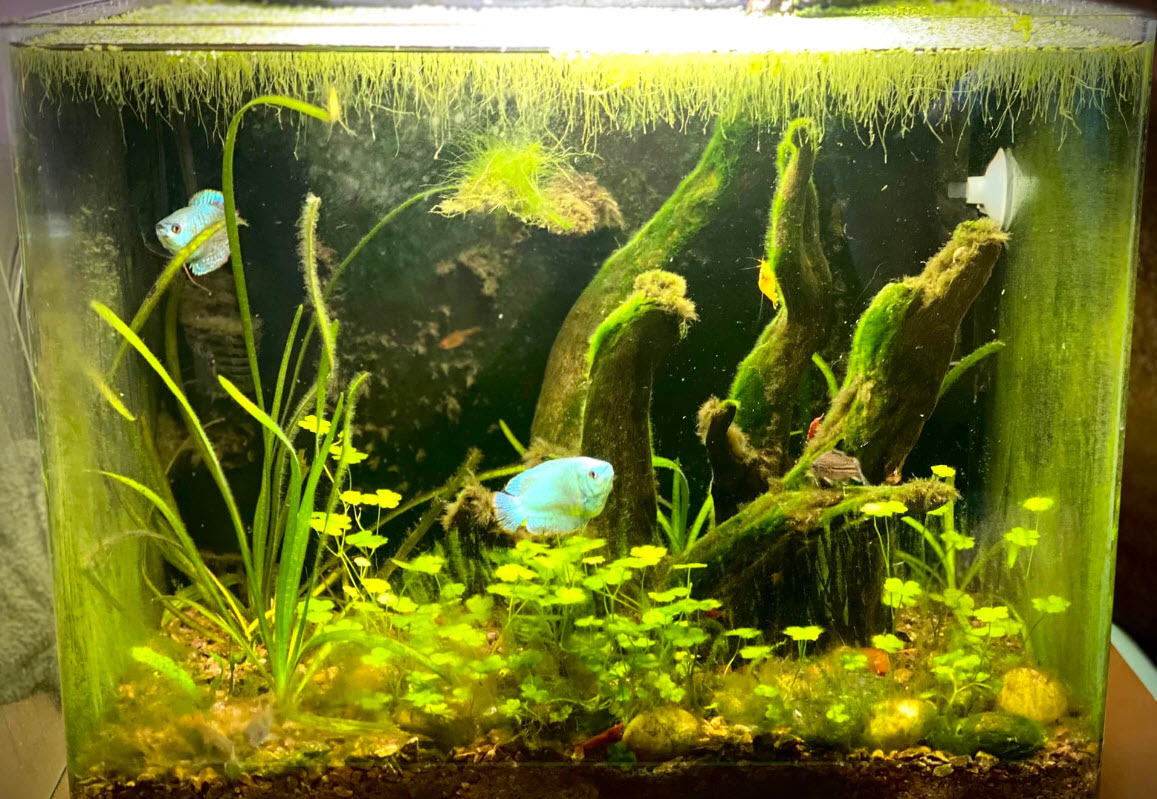Algae are a problem for most fish keepers. The problem is that most “newbies” try to fight the algae and eliminate it from their aquarium. This is simply impossible. The best way to fight algae is to keep nitrates low in the aquarium with water changes. This also keeps phosphorus low in the aquarium. This LIMITS the algae growth in the aquarium, it does not stop it. A fish keeper who does a lot of water changes will typically still get some brown and green films here and there, but the algae TYPICALLY won’t get out of control.
Some algae on the back walls and decorations of the aquarium is very beneficial for all aquariums. This brown and green film is typically filled with little invisible organisms which small fish love to pick at and eat. This film is just a healthy part of the ecosystem of a “mature” tank. Experienced hobbyists will correctly tell newbies that constantly cleaning away this algae will result in sick fish. Fish die frequently in newly set up aquariums. They die much less frequently in “mature” aquariums. That is just a fact. Accept it.
There are constant complaints from “newbies” to the hobby about brown or green algae in the aquarium. “How do I stop all this algae from forming?” is the common question. The very simple answer is “You don’t!” Algae forms on the glass and ornaments of every single aquarium without exception. The hobbyist just needs to clean off the front glass once every two weeks or so. It is just part of the hobby.

Here’s more information on the topic with links:
Social media experts often identify algae very specifically; “This is rhizoclonium algae”. Since there are tens of thousands of species of algae, some of which look identical even though they are only distant relatives, this sort of identification is inaccurate most of the time. For a better explanation go to this link
Well meaning but ill-informed individuals on social media not only identify specific algae, they give very exacting advice on exactly what to do for this particular species of algae. Since there are tens of thousands of species of algae and each species reacts differently to changes in its environment this is rarely productive. For a good generalized way to attack excess algae go to this link:

Then we have some generalized discussions of types of algae, with a clear understanding that this may or may not be pertinent to any situation:
16.4. Blue-Green Algae (technically a “Cyanobacteria”)

And finally there are some organisms commonly identified as algae which are not algae:


